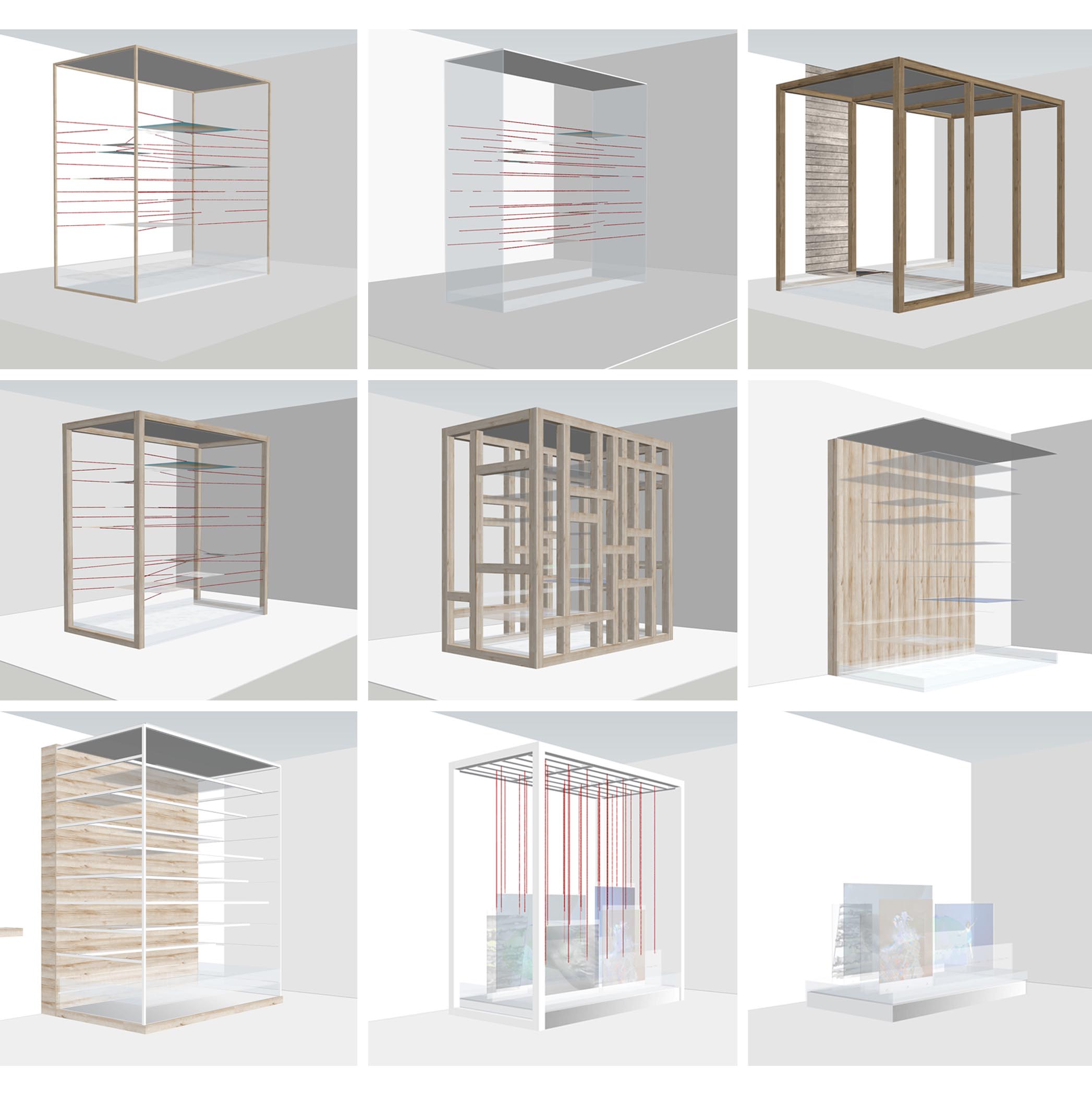Venice Biennale Part 2: Design Process
Camille Peignet
Designing – whether an object, space, or installation – often follows an irregular path. This path is even more winding when designing a temporary installation for the first time.
The GAA Foundation invited Red Dot Studio to participate in the 2018 Venice Biennale. The theme of the exhibition is far reaching: “TIME SPACE EXISTENCE”.
We decided to focus on the inextricable link between humans and the ocean. We fine-tuned the messages we wanted to transmit and exchanged rough sketches. We decided on a concept that links initiatives of water conservation and humans’ existence. Our first attempt to translate this idea into shapes was to literally use water to reflect different translucent images of ocean conservation endeavors in California. Visitors would be able to interact with the reflecting pool and see their own reflection among the projects.
During this intense research phase, we contacted researchers, scientists, artists, entrepreneurs, authors and divers in the hope of collaborating. This research also inspired and nourished our creativity. Some individuals even offered artistic directions! The photographer Thomas Heinser, and the artists Hughen/Starkweather, both agreed to let us use their artwork and helped create the user experience aspect of our temporary installation.
Just as we do with the homes we build, we surrounded ourselves with consultants in order to push the design from concept to realization. We are not used to questioning materials’ technical abilities quite like we had to in this instance. This was the first time we wondered how to hang glass horizontally with ropes! We worked on details to make the installation real, i.e. shape, dimensions and hanging possibilities. A big question for us was: What medium can we print on that is both transparent and recyclable? The only answer we found, apart from plastic, definitely not ocean friendly, is glass, despite its weight and fragility.
Glass is a tricky material; it needs strong attachments but can easily break. Hanging it with ropes was too difficult for our project. Furthermore, the GAA Foundation and the Palazzo hosting the project were worried about the weight of all this glass.
With more context and parameters concerning the site, organization of the event, and shipping constraints, we found ourselves needing to fine tune our design. We tried to stick with the original concept while managing the shortened timeframe, shipping constraints and items already in construction with the added new site parameters.
To us, design is a combination of the meaningful, useful and delightful. It is important to assemble the look, the tectonics and the concepts while taking into account the variety of constraints. We had to redefine our main objectives while staying true to our goals and research.
Faced with two mediocre options of exhibition spaces, we clearly laid out our concept and key elements to the GAA. They heard us out and were able to propose the perfect space for our installation. With this new iteration comes new details to resolve. We learned our lessons and always went back to the concept when making choices.
The last phase of design, before it is live, is construction and installation. We look forward to landing in Venice, which will bring new challenges. But design always finds its way!




